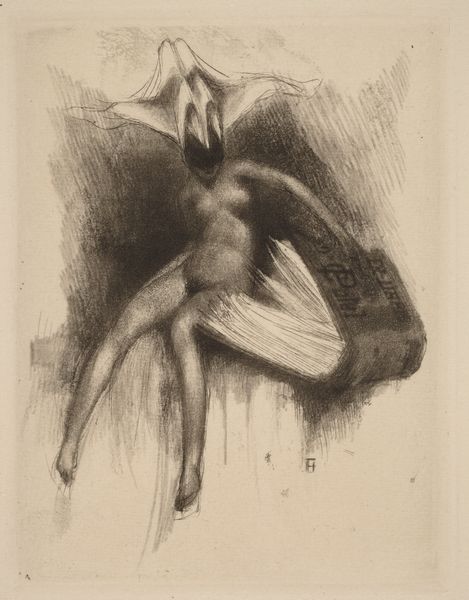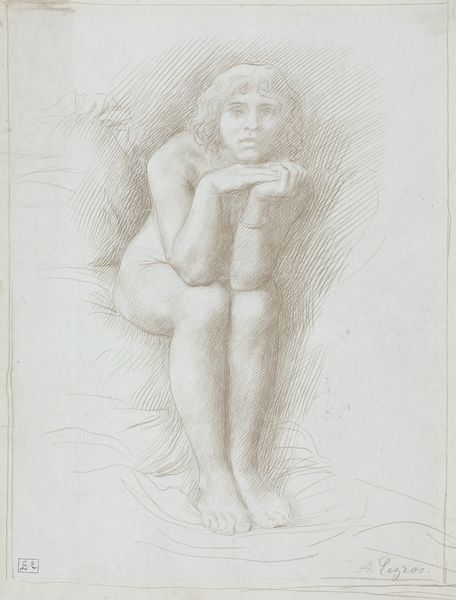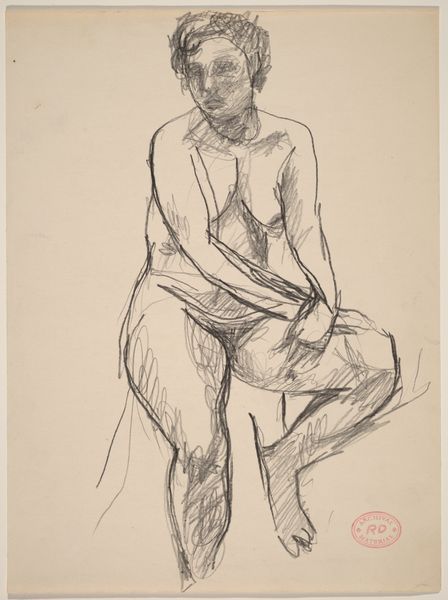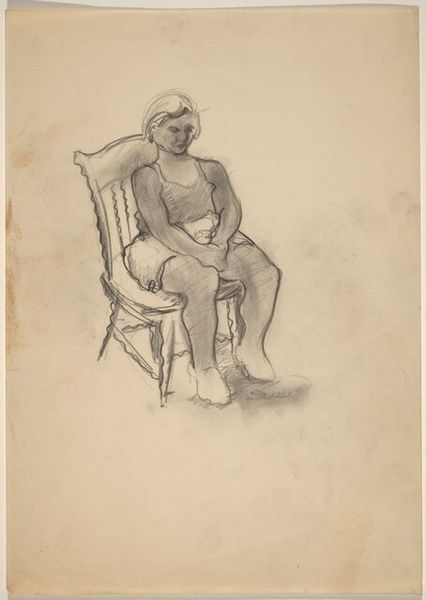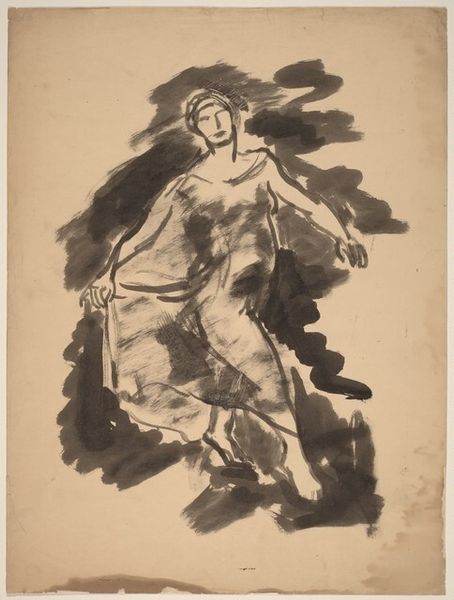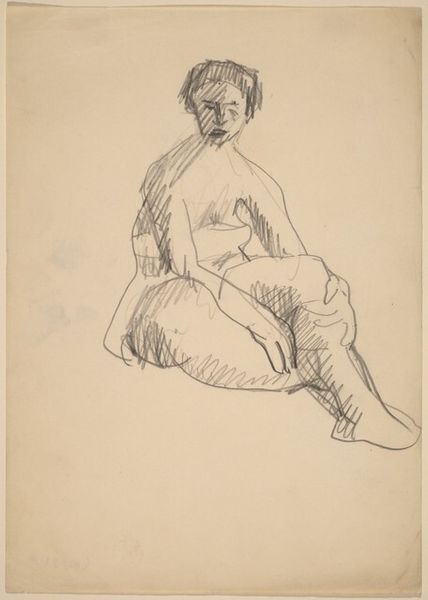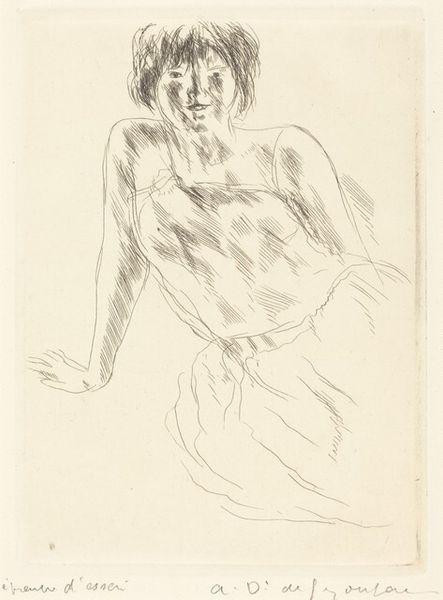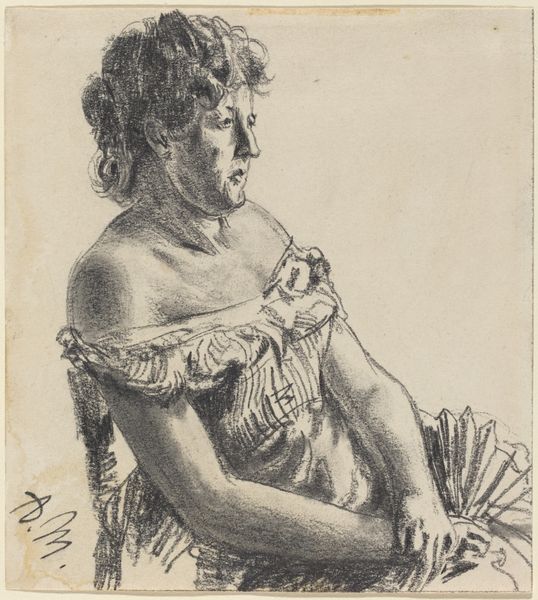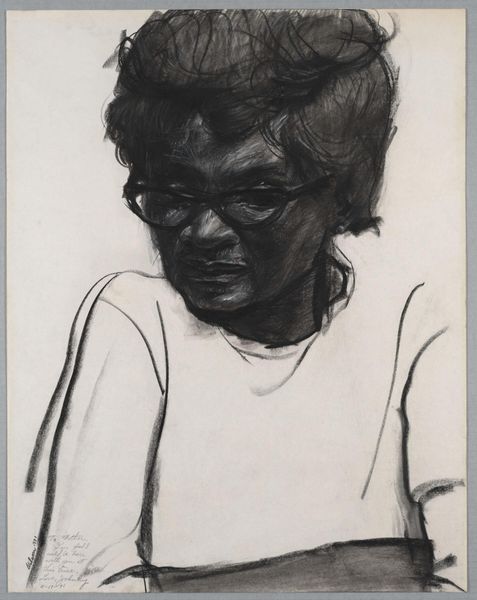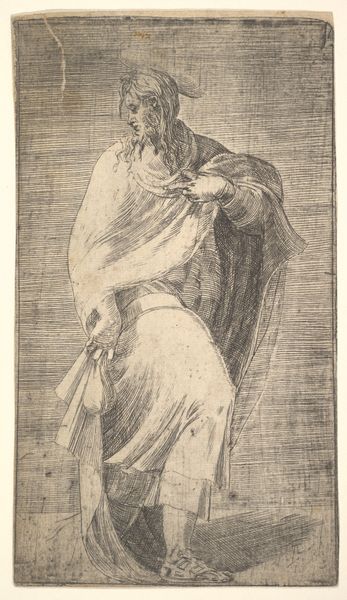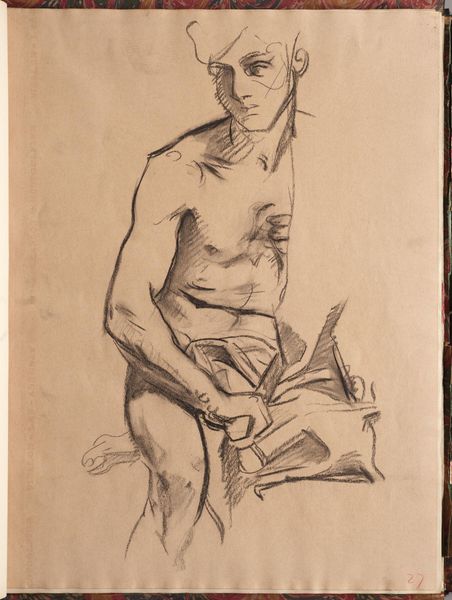
drawing, charcoal
#
portrait
#
pencil drawn
#
drawing
#
facial expression drawing
#
light pencil work
#
pencil sketch
#
charcoal drawing
#
portrait reference
#
pencil drawing
#
animal drawing portrait
#
portrait drawing
#
pencil work
#
charcoal
#
nude
Dimensions: 684 mm (height) x 570 mm (width) (bladmaal)
Curator: Before us, we have Oluf Hartmann’s charcoal drawing, “Kvindelig model,” created between 1901 and 1905. Editor: There’s a stark immediacy to it. The sharp contrast of light and shadow creates a dramatic, almost theatrical effect. The figure appears caught between emergence and submergence. Curator: Precisely. The chiaroscuro is central to its formal impact. Note how the artist uses bold strokes to define form and then allows the eye to fill in the negative space, particularly around the unfinished limbs. This enhances the dynamic tension within the composition. Editor: It makes me consider the very process of drawing, doesn’t it? The rough strokes of charcoal reveal the artist's hand—the physical act of mark-making on paper. I'm interested in where Hartmann sourced the charcoal and the paper he favoured; did it impact the nature of his practice? Curator: Interesting thought. Formally, the partial completion guides our eye, drawing our attention to the planes of her face. The gaze, slightly averted, lends a psychological depth. It isn't merely a study of form, but a suggestion of interiority. Editor: I wonder about the model. What were the working conditions? Was she paid fairly? There is a power dynamic evident in this sort of depiction. I wonder if Hartmann was exploring the social conditions of female workers during this time. Or perhaps merely reflecting on them? Curator: A valid question, but if we consider only the internal mechanics of the drawing, one can see how the tonal gradations model her form. There is almost an archetypal feminine form presented before us; classical but presented with modern brevity. Editor: Despite its classical roots, it is the very visible and material process behind the image which I find most compelling: the interaction between the model, artist, materials and setting. The process made material, in a way. Curator: Perhaps we find a compromise there, with the art as product revealing a moment of art in progress. Editor: It certainly gives you food for thought.
Comments
No comments
Be the first to comment and join the conversation on the ultimate creative platform.

